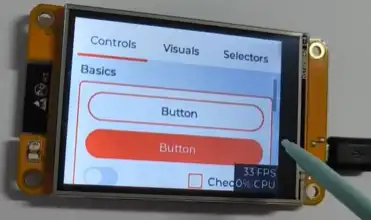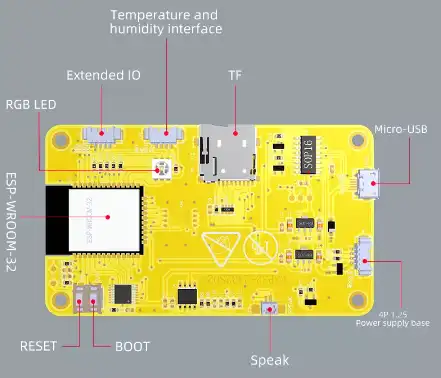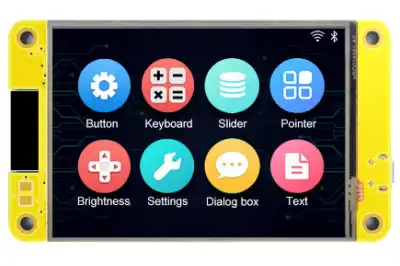Sunton ESP32 are a series of very low-cost development boards that incorporate ESP32 along with a touch TFT screen.
This type of boards appeared some time ago in sellers such as AliExpress, and integrated an ESP32 + TFT + touch panel at a very low price.
I must be honest in saying that, at first, they seemed too cheap to be true. The first thing I thought was that they were going to send you something that didn’t work, or not send you anything at all.
But after buying several screens, and testing them quite a bit, I must say that not only do they work, but they are highly recommended machines. They have all arrived in good condition and functioning flawlessly.
In reality, we are dealing with a series of development boards that mount an ESP32-D0WDQ6 (WROOM), with a 32-bit Xtensa LX6 dual-core 160Mhz processor, 520 KiB SRAM, and 16MiB flash memory.

There is a version of 2.8” with a resolution of 240x320 or 3.2” with a resolution of 320x480. We also have the option of a resistive or capacitive touch panel. Naturally, the capacitive option has better response and is slightly more expensive.
As for the processor, we already know the characteristics of our friend ESP32, which we can summarize as:
- 32-bit Xtensa LX6 dual-core 160Mhz processor (max 240 Mhz)
- 520 KiB SRAM, external flash memory up to 16MiB
- Wifi 802.11 b/g/n 2.4GHz (supports WFA/WPA/WPA2/WAPI)
- Bluetooth v4.2 BR/EDR and BLE
- 32 GPIO pins
- 12-bit, 18-channel analog-to-digital converter (ADC)
- 2 8-bit digital-to-analog converters (DAC)
- 16 PWM outputs (LED PWM)
- 3x UART, 4x SPI, 2x I2S, 2x I2C, CAN bus 2.0
- 11 10-pin analog-to-digital converters
- 10x capacitive sensors (in GPIO)
- 1 PWM output for motors, temperature sensor, Hall effect sensor, random number generator, real-time clock (RTC), infrared remote controller (8 channels)

In addition to this, the board features:
- Touch TFT screen
- SD Card slot up to 16GB
- Expansion cable x
- Micro USB cable x
- Speaker connector
- Integrated RGB LED
- Light sensor for backlight control
We can find the board on international sellers, identified as an ESP32 development board with LVGL. While it is true that running LVGL (like any other ESP32) does not necessarily mean that we have to use LVGL. Sellers use it more as a selling point.
Of course, like all ESP32 devices, it is compatible with the Arduino programming environment. In other words, it is very easy to use the environment and libraries to adapt it to our DIY and IoT projects.
As for the price, we can find the 2.8” model for around €14, including shipping costs. In the case of the 3.2” model, we find the resistive touch model for €18, and the capacitive touch model for €21.
In other words, due to the characteristics of this board, and the number of peripherals it integrates, it is a very affordable and interesting price.
The documentation is somewhat scarce, but I leave you some links that I have found
- https://wiki.makerfabs.com/Sunton_ESP32_2.8_inch_240x320_TFT_with_Touch.html
- https://www.makerfabs.com/sunton-esp32-2-8-inch-tft-with-touch.html
- https://macsbug.wordpress.com/2022/08/17/esp32-2432s028/
- http://www.jczn1688.com/zlxz
On the other hand, here is a repository of mine with the LVGL code example, all ready to go (including the LVGL library with some fixed defects). Demo-ESP32-TFT-2.8-LVGL
